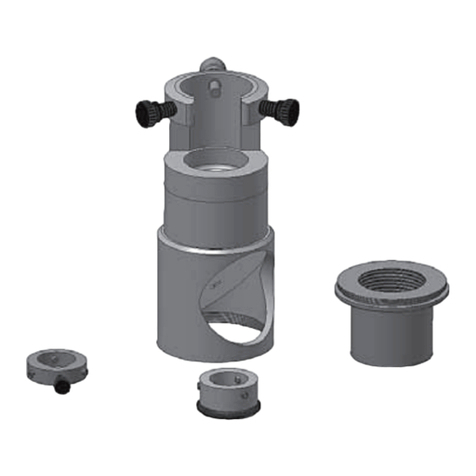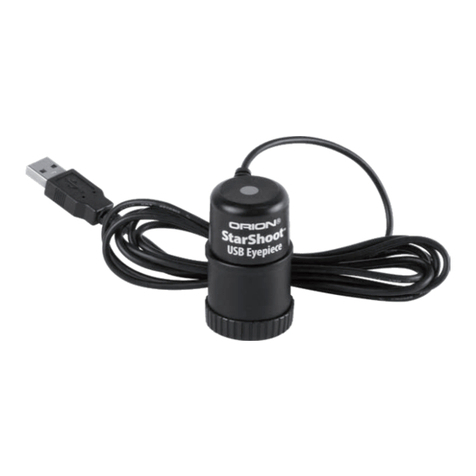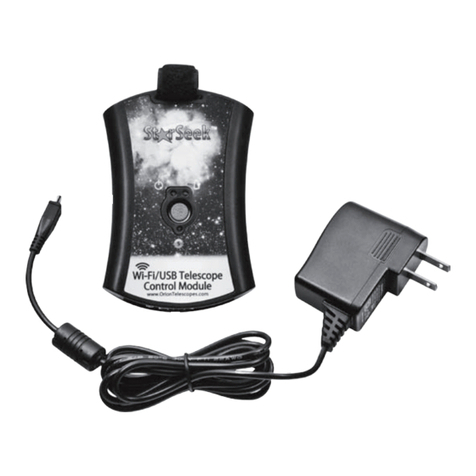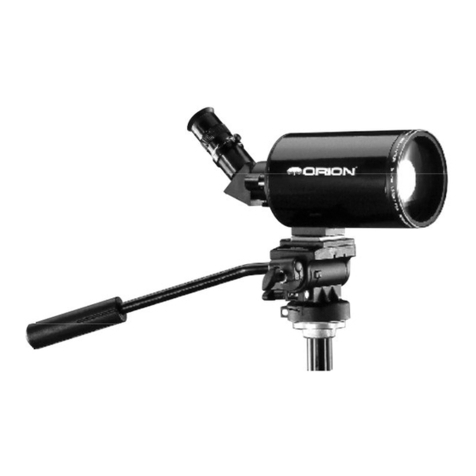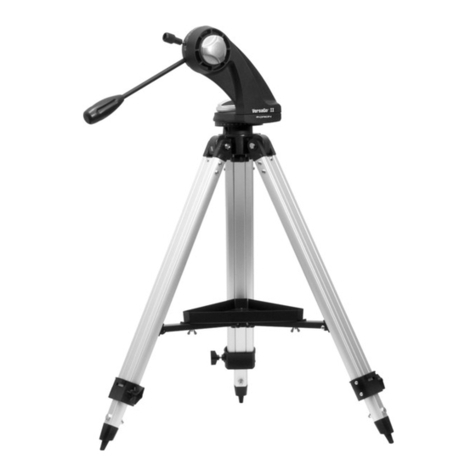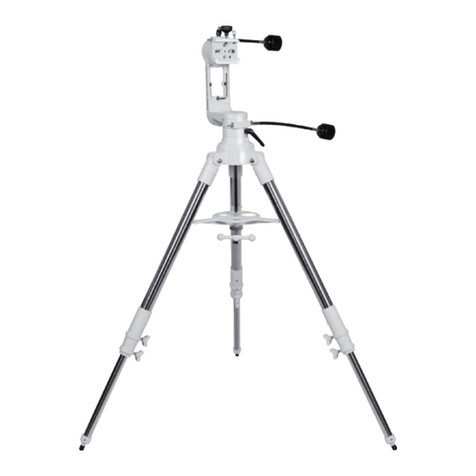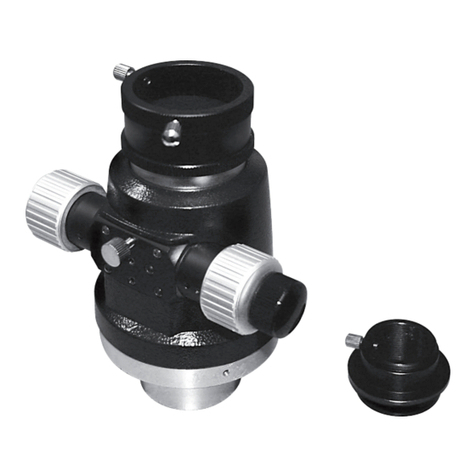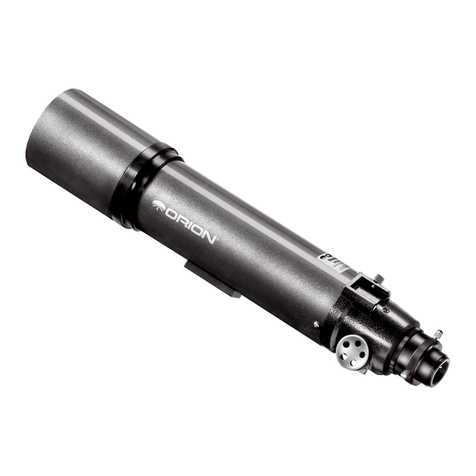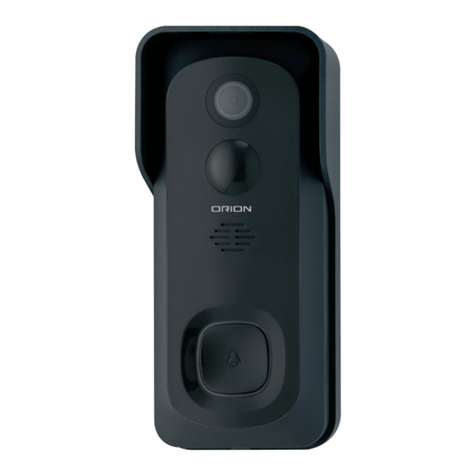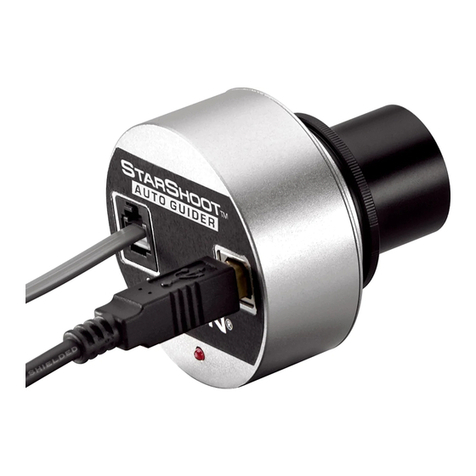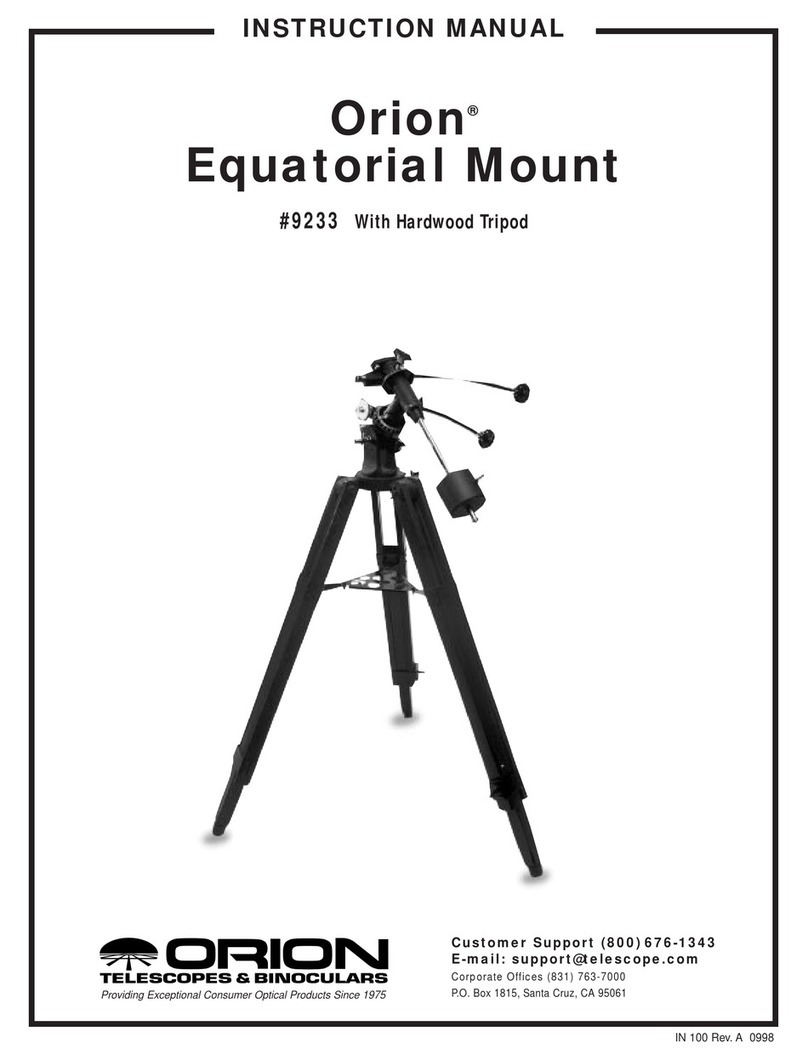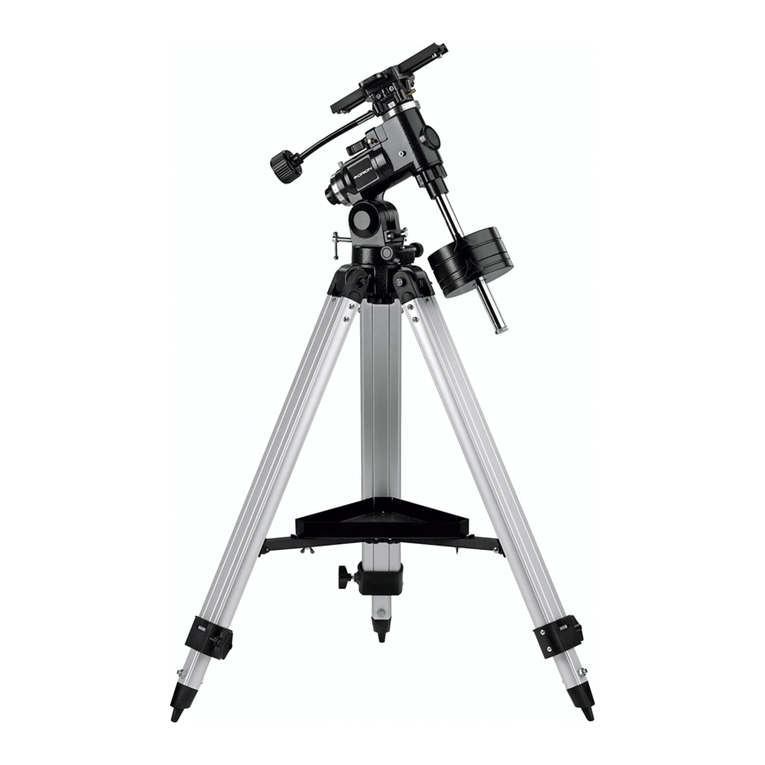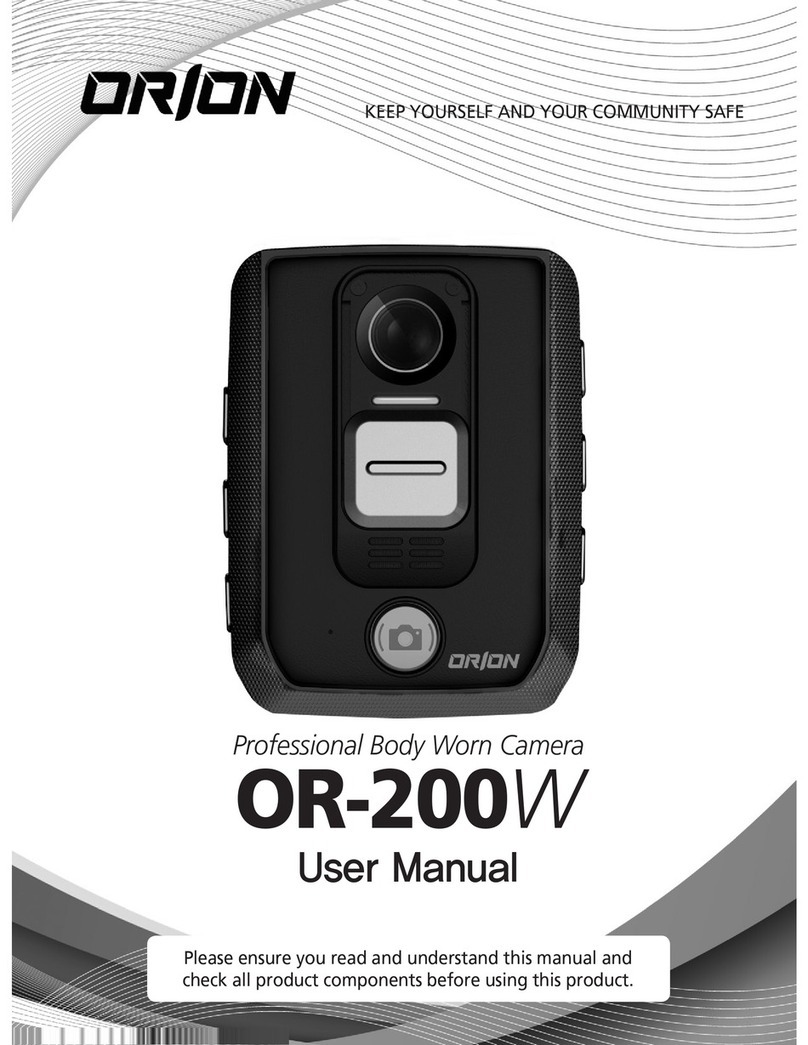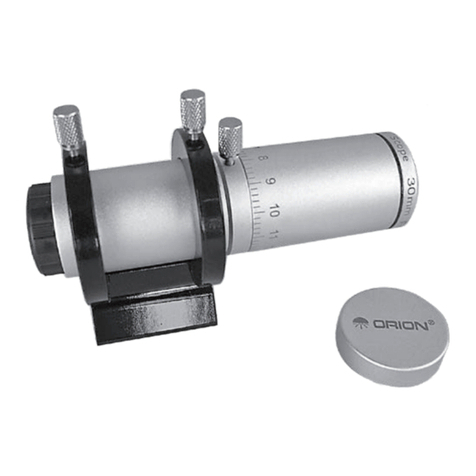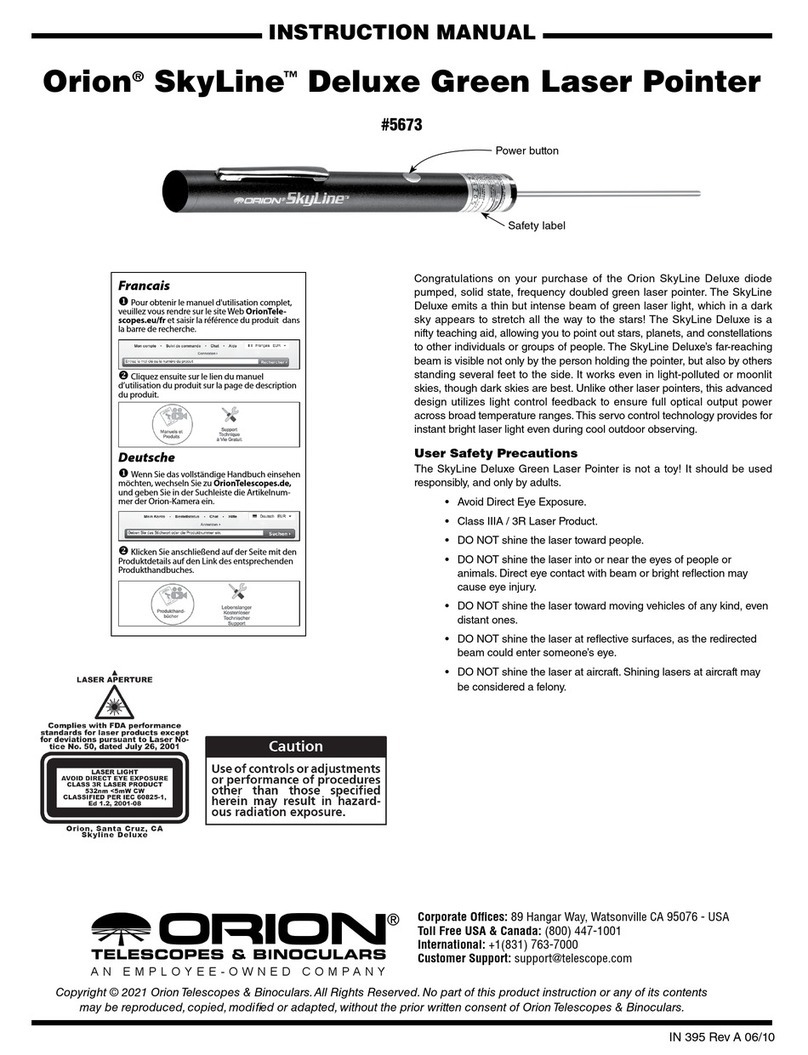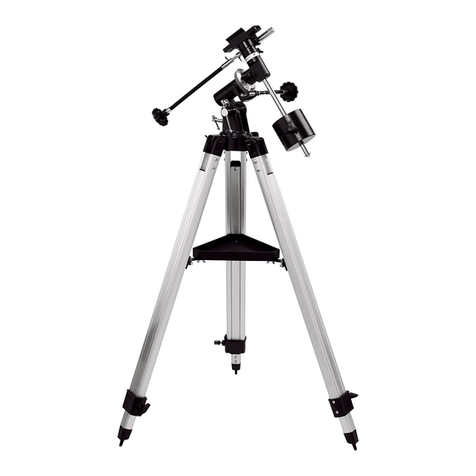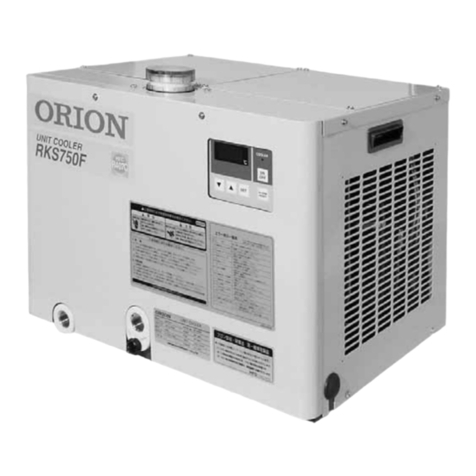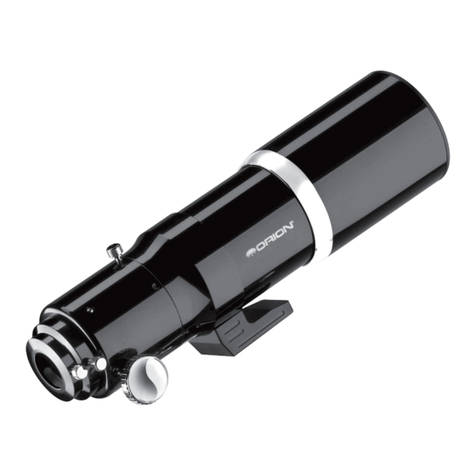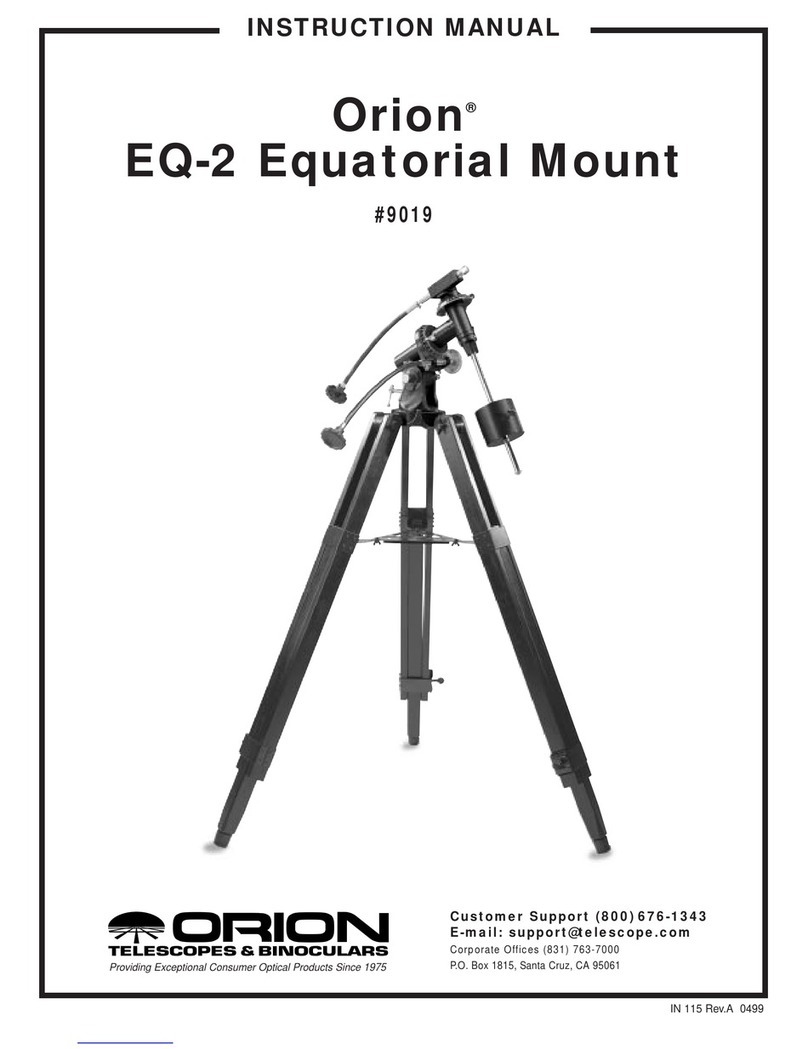
7
alignment quick and easy. To polar align the mount using the
polar axis finder scope, follow these instructions:
1. Approximately polar‑align the mount as outlined in the
procedure above.
2. Loosen the Dec. lock lever and rotate the optical tube on
the declination axis so the tube is at a 90° angle to the right
ascension axis (Figure 8). Tighten the Dec. lock lever.
3. Focus the polar finder by rotating the eyepiece. Now, sight
Polaris in the polar axis finder scope. If you have followed
the approximate polar alignment procedure accurately,
Polaris will probably be within the field of view. If not, move
the tripod left‑to‑right, and adjust the latitude up‑and down
until Polaris is somewhere within the field of view of the
polar axis finder scope.
4. The mount has a built‑in illuminator that allows you to see
the reticle pattern in the polar axis finder scope at night.
Simply turn on the power switch on the Atlas EQ‑G mount
(see “Powering the Atlas EQ‑G Mount”) and the polar axis
finder scope reticle will be illuminated. Note the constel‑
lation Cassiopeia and the Big Dipper in the reticle. They
do not appear in scale, but they indicate the general posi‑
tions of Cassiopeia and the Big Dipper relative to the north
celestial pole (which is indicated by the cross at the cen‑
ter of the reticle). Rotate the reticle so the constellations
depicted match their current orientation in the sky when
viewed with the naked eye. To do this, release the R.A.
lock lever and rotate the main telescope around the R.A.
axis until the reticle is oriented with sky. For larger optical
tubes, you may need to remove the tube from the mount
to prevent it from bumping into the mount. Once the reticle
is correctly oriented, use the right ascension lock lever to
secure the mount’s position.
5. Now use the azimuth adjustment knobs (Figure 2) and
the latitude adjustment L‑bolts (Figure 5) on the mount
to position the star Polaris inside the tiny circle marked
“Polaris” on the finder’s reticle. You must first loosen the
knob underneath the equatorial mount on the center sup‑
port shaft to use the azimuth adjustment knobs. Once
Polaris is properly positioned within the reticle, you are
precisely polar aligned. Retighten the knob underneath
the equatorial mount.
If you do not have a clear view of Polaris from your observing
site, you will not be able to use the polar‑axis finder to pre‑
cisely polar align the telescope.
Note: From this point on in your observing session, you should
not make any further adjustments in the azimuth or the lati‑
tude of the mount, nor should you move the tripod. Doing so
will undo the polar alignment. The telescope should be moved
only about its right ascension and declination axes.
Additional Note Regarding Focusing the Polar
Axis Finder Scope
The polar axis finder scope is normally focused by simple
rotation of the eyepiece focus ring. However, if after adjust‑
ing the focus ring you find that the image of the reticle is
sharp, but the stars are out of focus, then you must adjust the
focus of the polar axis finder’s objective lens. To do this, first
remove the polar axis finder from the mount by unthreading
it. Look through the polar axis finder at a star (at night) or
distant object at least 1/4 mile away (during daylight). Use the
eyepiece focus ring to bring the reticle into sharp focus. Now,
loosen the focus lock ring (Figure 7) and thread the entire
objective end of the finder inward or outward until images
appear sharp. Re‑tighten the focus lock ring. Once the polar
axis finder’s objective lens is focused, it should not need to be
adjusted again.
Confused About Pointing the Telescope?
Beginners occasionally experience some confusion about
how to point the telescope overhead or in other directions. In
Figure 1 the telescope is pointed north as it would be during
polar alignment. The counterweight shaft is oriented down‑
ward. But it will not look like that when the telescope is pointed
in other directions. Let’s say you want to view an object that is
directly overhead, at the zenith. How do you do it?
DO NOT make any adjustment to the latitude adjust‑
ment L‑bolts. That will spoil the mount’s polar alignment.
Remember, once the mount is polar aligned, the telescope
should be moved only on the R.A. and Dec. axes. To point the
scope overhead, first loosen the R.A. lock lever and rotate
the telescope on the right ascension axis until the counter‑
weight shaft is horizontal (parallel to the ground). Then loosen
the Dec. lock lever and rotate the telescope until it is pointing
straight overhead. The counterweight shaft is still horizontal.
Then retighten both lock levers.
What if you need to aim the telescope directly north, but at
an object that is nearer to the horizon than Polaris? You can’t
do it with the counterweights down as pictured in Figure 1.
Again, you have to rotate the scope in right ascension so that
the counterweight shaft is positioned horizontally. Then rotate
the scope in declination so it points to where you want it near
the horizon.
To point the telescope directly south, the counterweight shaft
should again be horizontal. Then you simply rotate the scope
on the declination axis until it points in the south direction.
Figure 8. The optical tube must be rotated about the declination
axis in order to view through the polar axis finder.
